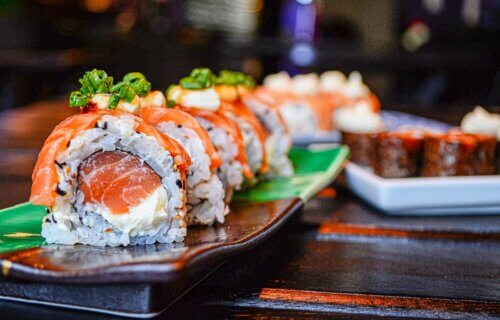OSAKA, Japan — We often hear about the significance of diet in maintaining health and well-being. One routine that has been an emblem of healthiness is the Japanese diet. Recently, scientists ventured into the depths of the Japanese diet and emerged with some intriguing insights, especially regarding its effects on liver health.
In particular, following the typical eating habits of the Japanese could protect again NAFLD – Non-Alcoholic Fatty Liver Disease. This is a condition where excess fat accumulates in the liver, and it’s not due to alcohol consumption. It’s like your liver is constantly at a junk food buffet, and it’s affecting its health.
NAFLD is becoming a global concern, and its extreme form called NASH can seriously damage the liver. Understanding how to prevent or manage NAFLD is a puzzle researchers are eager to solve.
How the Japanese diet protects against NAFLD
Researchers at the Osaka Metropolitan University gathered a group of people with NAFLD and closely examined their eating habits, liver health, and muscle mass. They primarily focused on how much the participants adhered to a traditional Japanese diet, which is known for its high consumption of fish, shellfish, seaweed, mushrooms, and fermented foods.
They used two scoring systems for the study: the Agile 3+ scores to measure the risk of advanced liver problems, and the mJDI12 score to gauge adherence to a Japanese diet. Scientists discovered that those who followed the Japanese diet pattern closely were less likely to have severe liver problems. Within the diet, some components stood out as superstars: soybeans and soy-based foods (like tofu), fish, shellfish, and seaweeds.
But there’s more! Muscle mass also played a significant role. Participants with higher muscle mass had lower chances of advanced liver issues. Interestingly, while the Japanese diet itself didn’t have a direct relationship with muscle mass, consuming soybeans and soy-based foods did.
Unraveling the why
The Japanese diet is rich in antioxidants like vitamin C, β-carotene, and α-tocopherol. Antioxidants are like the body’s janitors – they clean up messes caused by oxidative stress, which is one of the culprits behind liver damage in NAFLD.
Soybeans, as noted, deserve a special mention. Besides being an excellent protein source for muscle building, they contain genistein, which has been shown to help reduce body fat and improve blood lipid levels. Another component, β-conglycinin, has been found to inhibit the progression of NAFLD in animal studies.
The study also highlights that higher muscle mass was associated with a lower risk of advanced liver fibrosis. The liver and muscles have a give-and-take relationship. Muscles play a vital role in regulating blood sugar levels, and a healthy liver contributes to muscle mass maintenance.
While the results are exciting, it’s essential to take into account the study’s limitations. First, the study was cross-sectional, meaning the researchers took a snapshot in time. This approach doesn’t allow for observing how diet and liver health might change over time.
The study also relied on Agile 3+ scores to estimate liver fibrosis severity, which isn’t as accurate as a liver biopsy. However, biopsies have their own challenges and can be invasive.
Additionally, the study was conducted at a single institution, meaning that the results may not represent diverse populations.
‘Japanese diet may be effective treatment for NAFLD patients’
The Japanese diet may hold keys to preventing or managing liver diseases like NAFLD. Incorporating elements of this diet, such as consuming more fish, shellfish, seaweeds, and soy-based products, might be a beneficial dietary strategy. It also opens up a pathway for more comprehensive studies to validate these findings.
Moreover, it sheds light on the importance of muscle mass in liver health. Building and maintaining muscle through diet and exercise might be an additional strategy to protect against liver diseases.
“This study indicates that the Japanese diet pattern may be effective as a dietary treatment for NAFLD patients. We hope that further intervention studies will lead to the establishment of an effective diet for those patients,” concludes Professor Yoshinari Matsumoto, study co-author, in a statement.
The research by Matsumoto and colleagues, published in the journal Nutrients, offers valuable insights, but it’s just the beginning. It invites further exploration and more rigorous studies to understand the nuances and build a holistic approach to managing liver diseases through diet.
So, whether you are someone dealing with NAFLD or someone looking to maintain a healthy liver, consider giving the Japanese diet a try and focus on building muscle mass as part of your health regimen. It’s not just sushi; it’s science!
